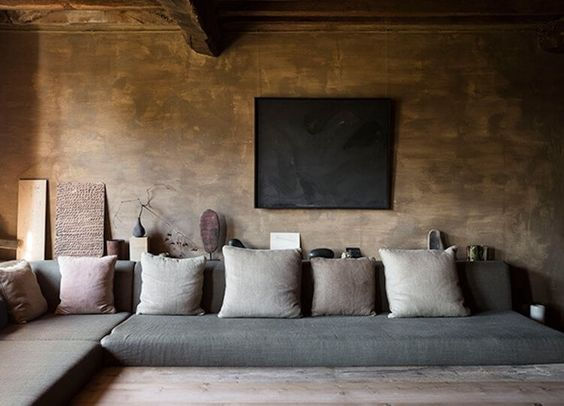From Clean Lines to Imperfect Beauty: The Difference between Warm Minimalism and Wabi-Sabi
- Amina Husain

- May 24, 2023
- 3 min read
Warm Minimalism and Wabi-Sabi are often misunderstood as one design style and even if one knows that they are different, many designers can't tell them apart. In this blog we present the distinctive features and design philosophies of each of them.
THE DESIGN PHILOSOHY
Warm Minimalism: Warm Minimalism is centered around the concept of simplicity, functionality, and clean lines. It embraces a minimalist philosophy but incorporates warm and inviting elements to create a cozy atmosphere. It focuses on reducing clutter and using essential elements to create a harmonious and comfortable space.
Wabi-Sabi: Wabi-Sabi is a Japanese aesthetic philosophy that appreciates the beauty of imperfections, impermanence, and the natural cycle of life. It celebrates simplicity, modesty, and the authenticity of materials. Wabi-Sabi embraces the idea of finding beauty in imperfection and cherishing the unique character of objects and spaces.
Both styles offer a sense of tranquility and a departure from excessive ornamentation, but they differ in their underlying philosophies and approaches to design.
DIFFERENCE BETWEEN WARM MINIMALISM AND WABI-SABI
In Warm Minimalism, there are certain elements that are commonly found but may not be as prominent in Wabi-Sabi. Here is how you can differentiate between these very similar but often misunderstood & overlapped interior styles:
Crisp Lines and Geometric Forms:
Warm Minimalism often incorporates clean lines and geometric shapes in its design. Straight edges, sharp angles, and well-defined forms are prevalent, contributing to a sleek and contemporary look.

In Wabi-Sabi, on the other hand, there is a preference for more organic and irregular shapes, embracing asymmetry and the natural flow of objects.

1. Polished Surfaces:
Warm Minimalism tends to feature polished and glossy surfaces, such as sleek countertops, glossy finishes on furniture, and shiny metal accents. These reflective surfaces add a sense of sophistication and modernity to the space.

In Wabi-Sabi, there is a preference for rough and textured surfaces, celebrating the natural patina, rawness, and tactile qualities of materials.

2. Neutral Color Dominance:
Warm Minimalism often leans towards a neutral color palette as the foundation of the design. This includes shades like whites, creams, beiges, and warm grays. The focus is on creating a calm and harmonious environment through the use of subtle and understated colors.

In Wabi-Sabi, while neutral colors are also common, there is a greater acceptance of muted earthy tones and subtle variations that reflect the natural world.

3. High Levels of Order and Organization:
Warm Minimalism places a strong emphasis on organization and clutter-free spaces. Storage solutions are carefully integrated into the design, ensuring a clean and streamlined appearance.

Wabi-Sabi, on the other hand, embraces a more relaxed and casual approach, allowing for a certain level of natural disorder and a sense of spontaneity in the arrangement of objects.

4. Modern and Contemporary Furniture:
Warm Minimalism often incorporates modern and contemporary furniture pieces with sleek designs and smooth finishes. These pieces tend to have a minimalist aesthetic, with a focus on functionality and simplicity.

In Wabi-Sabi, there is a preference for more rustic, vintage, or handmade furniture that showcases natural textures and imperfections.

Summary
While Warm Minimalism and Wabi-Sabi share some common elements, the presence of crisp lines, polished surfaces, neutral color dominance, high levels of order, and modern furniture are more closely associated with Warm Minimalism and may not be as prominent in the Wabi-Sabi style.









Comments